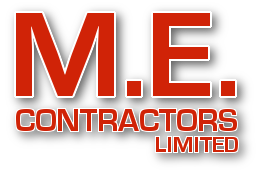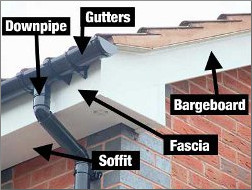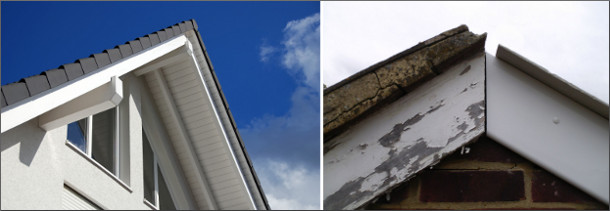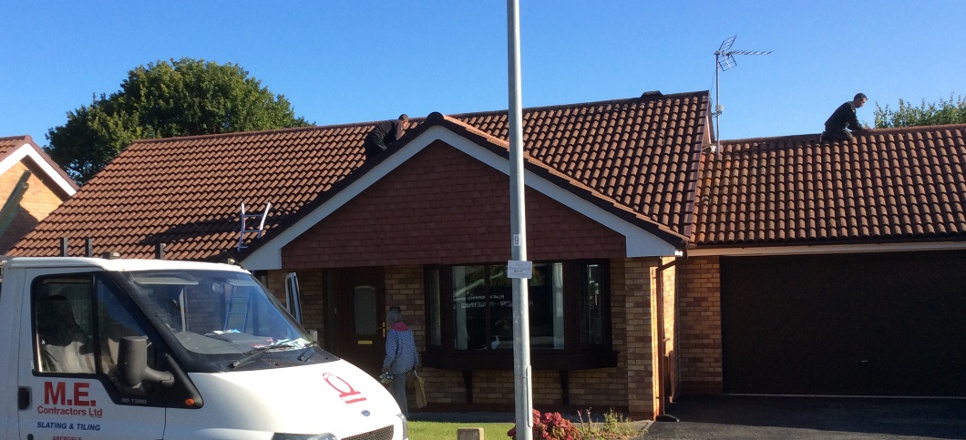
ROOFING NORTH WALES

M E CONTRACTORS
Roofline
What is meant by roofline?

'Roofline' encompasses all the structural and decorative components around the roof and which connect the roof to the walls: fascia, barge board, dry verge cap, box end, soffit, cladding, rainwater goods (guttering and downpipes).

Fascias, bargeboards and verges
Obviously the first task is to remove all rotten timbers. You then have a choice whether to opt for 18mm thick Euroboard (PVCu surface bonded to structural backing foam) or an 18mm PVCu capping board profile which is fixed over newly replaced timbers.
Dry verge caps are the modern alternative to 'wet verges'. A 'wet verge' describes the feature common on older properties whereby the end tiles are held inposition with mortar. The problem with mortar is that it deteriorates over time; cracks appear; the rain penetrates and the tiles loosen. Dry verges are more durable and are mechanically fixed.
Soffits
To finish the roofline replacement, choose between a foam soffit board or alternative hollow profile. Both provide a high quality finish.


The roofline area is the most exposed and vunerable feature of any property.
It is ravaged by all weathers and is susceptible to hazards such as blocked gutters which can cause timber fascias to rot quickly.

Rot-proof PVCu vented soffit.
Installation underway of a replacement vented soffit - gutters yet to be fixed in position.

Maintenance-free PVCu fascia and cladding panels
Not only does PVCu alleviate the worry of expensive replacement of rotten timbers, but also will eliminate the need for repainting every few years.
Covering over rotten timber does lead to problems long-term, so have the installation fitted correctly at the outset.
PVCu replacement roofline components are the strong, smart and extremely durable alternative to rotting woodwork.
In compliance with current building regulations all replacement soffits incorporate 4mm wide ventilation strip to guard against condensation build-up.
Securing storm damaged roof tiles and ridge tiles

